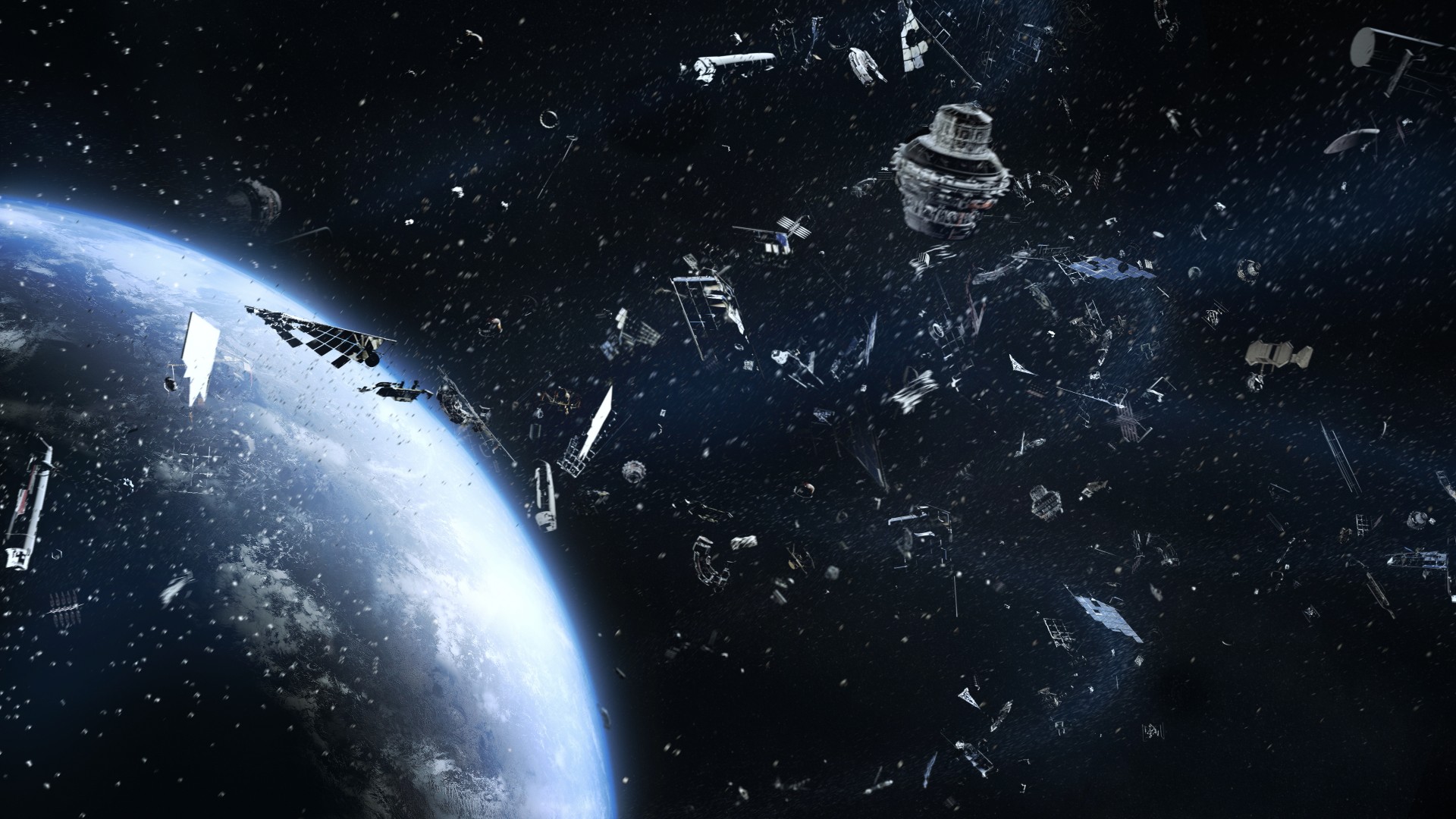Close call! 2 huge pieces of space debris had a near-miss in Earth orbit
The distance between the two objects was around just 118 feet (36 meters).

Two big pieces of space junk almost slammed into each other in low Earth orbit, highlighting the need to clear up space close to home.
Leolabs, a space traffic management services which tracks satellites and other objects in orbit, spotted the close call on Sept. 13, as a defunct Soviet payload and a spent Chinese rocket body whizzed by each other at incredible speeds.
The conjunction of the two objects saw the pair pass each other head-on. Leolabs identified these as likely being Cosmos 807, an 880 pounds (400 kilograms) payload launched in 1976, and a roughly 4,400 lb. (2,000 kg) Chinese Long March 4C rocket stage launched five years ago.
Each would have been traveling at around 7.5 kilometers per second, or 16,800 miles per hour as they passed overhead at an altitude of around 428 miles (689 km). A collision of these highly-energetic, massive chunks of space junk would create around 3,000 pieces of debris in low Earth orbit, according to Leolabs.
Related: Orbiting debris trackers could be a game changer in space junk monitoring
Earth's atmosphere is very tenuous at this altitude, meaning it would take a long time for even the smaller pieces of debris created by such a collision to fall back to Earth out of harm's way, increasing the danger for satellites operating in similar orbits.
⚠️ On Sept 13, a derelict Soviet-era payload had a conjunction with a Chinese rocket body. The miss distance was 36 m (± 13 m) and the probability of collision was 1E-3 (i.e., 0.1% or 1/1,000).While we've seen more nail biting events, this one is notable — here's why. pic.twitter.com/f32vt8uuclSeptember 18, 2023
Leolabs calculated that the miss distance was 118 feet (36 meters), plus or minus 43 ft (13 m), giving the probability of collision as 0.1% or one in a thousand. However, both pieces have have had tens of other close calls with other pieces of junk or operational satellites in the last couple of years.
Get the Space.com Newsletter
Breaking space news, the latest updates on rocket launches, skywatching events and more!
At orbital speeds, even tiny pieces of debris can inflict incredible damage. This could threaten astronauts aboard the International Space Station or China's Tiangong space station, or the ability to utilize orbits for Earth observation, science, communications and more.
A recent report from the European Space Agency noted that while new measures to mitigate space debris are being adopted by countries and companies, the existing debris in orbit makes our behavior in space unsustainable.
The new close call highlights the need to clean up our act in space and reduce the chances of cascading growth of dangerous space debris, known as Kessler Syndrome.
Join our Space Forums to keep talking space on the latest missions, night sky and more! And if you have a news tip, correction or comment, let us know at: community@space.com.

Andrew is a freelance space journalist with a focus on reporting on China's rapidly growing space sector. He began writing for Space.com in 2019 and writes for SpaceNews, IEEE Spectrum, National Geographic, Sky & Telescope, New Scientist and others. Andrew first caught the space bug when, as a youngster, he saw Voyager images of other worlds in our solar system for the first time. Away from space, Andrew enjoys trail running in the forests of Finland. You can follow him on Twitter @AJ_FI.









